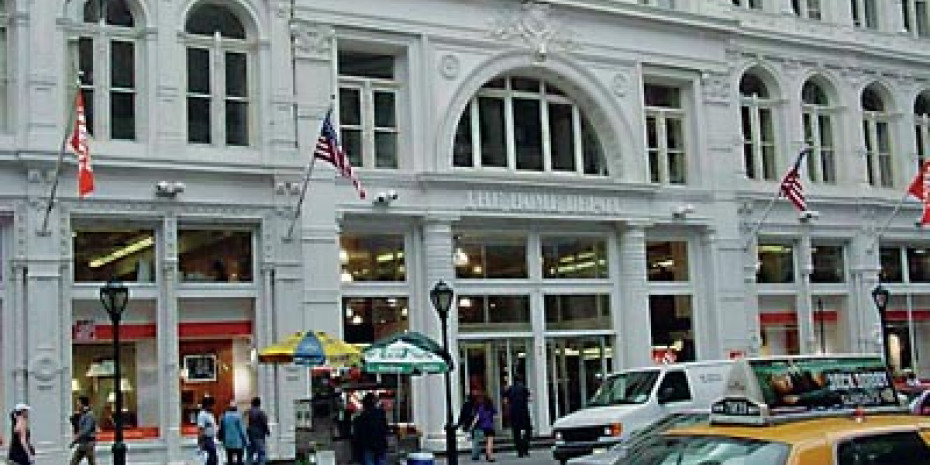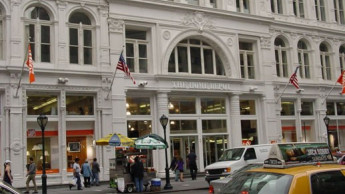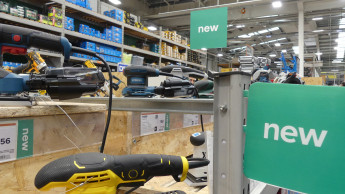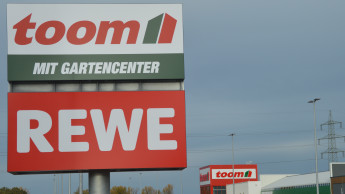The first Manhattan store is not immediately recognisable as a Home Depot: the glaring orange is missing.
The range of products available in the two stores is geared towards covering the needs of homeowners, tenants and landlords as well as trade customers, who had all previously been served by neighbourhood hardware shops and/or commercial distributors.
The inner-city area where the new DIY store is located also contains a great number of other retailers, including fashion houses, small food stores, chemists and bookshops.
A view down to the plumbing department on the basement level.
The new store’s inventory includes an extensive lighting department, hand and small power tools, paint and painting accessories, plus plumbing, including bathtubs and showers. There is also a small selection of garden products and equipment, along with major and small appliances. Noticeably lacking is a wide assortment of building materials. A home delivery service is also available to customers for a flat charge of US $ 21.
An impressively extensive choice of lighting.
Customers enter the store at street level, there is a mezzanine below and a basement level, making three floors altogether.
Displays seem less attractive than in the first Manhattan store, which also appears to be somewhat larger, though they are supposed to be similar in size. The 23rd St store also appears to have a larger selection of merchandise.
Paint mixing stations now play an important role in all Home Depot stores.
Last September saw the opening by Home Depot of its first Manhattan store in a historic building. Dominant categories here are paint and cabinet hardware, while lumber and building materials are largely absent. Paint is such an important category that the store has nine paint mixing machines.
Reflecting its growing emphasis on major appliances, Depot’s management has stocked this store with an extensive array of high priced and unusual appliances to differentiate itself from the normal appliance retailers in the city.
Because many…

 Menü
Menü














 Newsletter
Newsletter